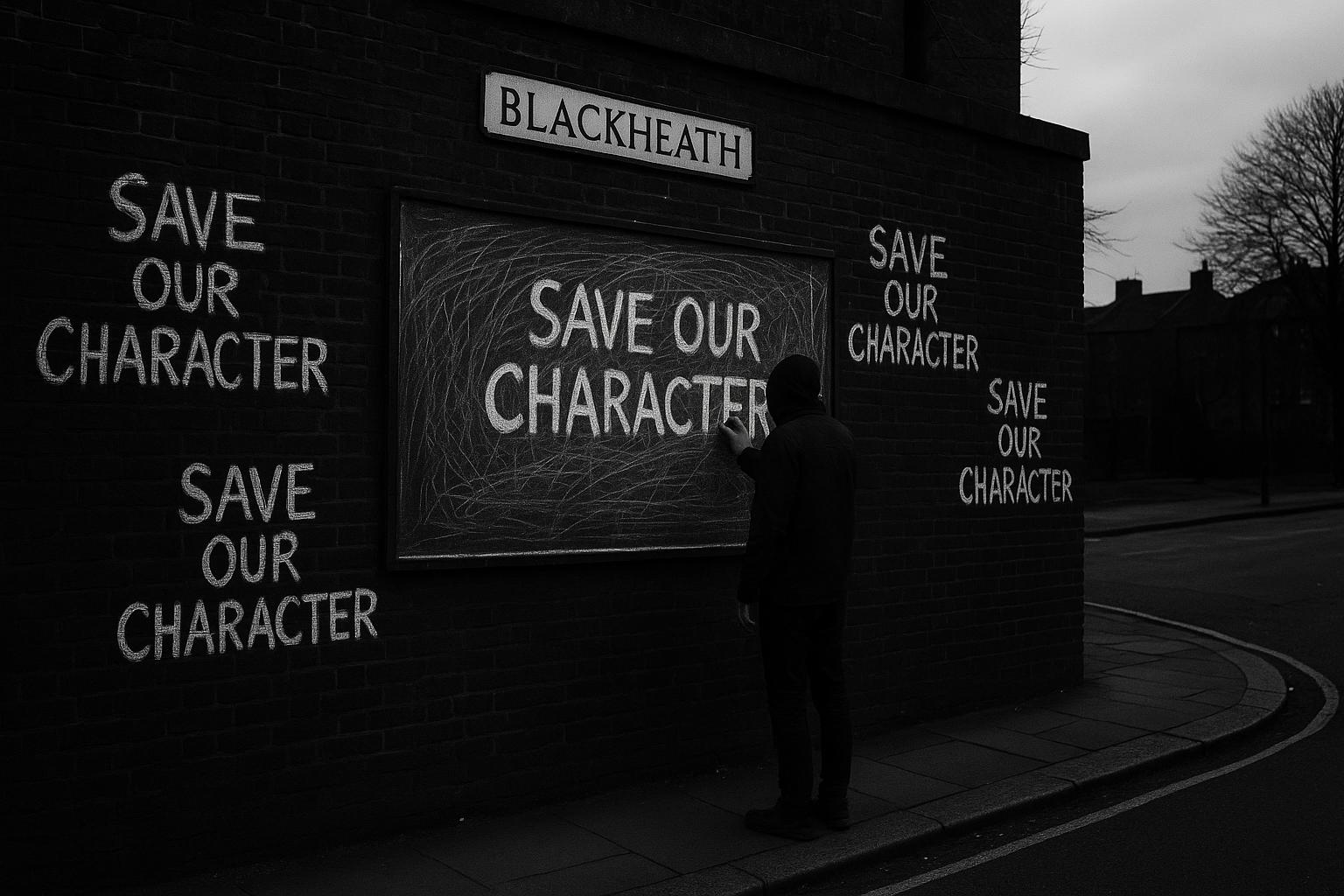For over two decades, Blackheath has been home to Sarah Hadland, a place she cherishes for its distinct village character, independent shops, and tight-knit community. This south-east London area is noted for its well-preserved Georgian and Victorian architecture and benefits from conservation area status, rigorously upheld by the council to maintain its historic charm. Hadland, an actress best known for her role in the comedy series Miranda and a former Strictly Come Dancing finalist, has become a vocal opponent of a proposed housing development that she believes threatens the essence of her beloved neighbourhood.
The development plan involves constructing 45 new homes—20 houses and 25 flats in blocks of four and five storeys—on the car park adjacent to Blackheath station, a Grade II-listed building recently refurbished with a £1.7 million heritage makeover. Hadland and many local residents regard the design as modern, generic, and incongruent with the surrounding historic environment. They also raise serious concerns about the lack of clarity regarding social housing provision and the future of the thriving Blackheath Farmers’ Market, an important weekly event that draws visitors and business to local shops. The market has been a fixture in the community for nearly 25 years, and local groups like the Blackheath Society warn that the proposed relocation plans are impractical and could imperil its survival.
Parking reductions are another contentious issue; the development would slash car parking spaces from 162 to just 17, stirring worries about where commuters and visitors will park. Hadland is particularly concerned about the impact on the nearby primary school, highlighting the loss of privacy for children due to one residential block directly overlooking the playground and classrooms, which would also suffer from reduced natural light. Additionally, the two-year construction project is expected to exacerbate traffic congestion in an already busy village centre, creating hazards for children at school drop-off and pick-up times.
The opposition to the plans is far-reaching. A remarkable 97 percent of the 660 formal comments submitted to Lewisham Council as part of the planning application object to the scheme. Prominent supporters of this resistance include public figures who have local connections such as actors Jude Law, Dominic Cooper, Lucy Boynton, Katherine Parkinson, and Kellie Shirley. They have co-signed with many others an open letter urging the council to reject the proposals, capturing the widespread fear that the development could irrevocably damage the village’s distinctive character and community spirit.
The government has prioritised housing development around railway stations, aiming to unlock “untapped” land and deliver 40,000 new homes over the next decade. Housing Minister Matthew Pennycook has suggested fast-tracking such projects to meet pressing housing needs, potentially overriding local opposition where necessary. This policy context frames the Blackheath development as a test case in balancing urgent housing demands with protecting heritage and community assets.
Defenders of the project argue that it would enhance Blackheath by replacing a car-dominated space with a thoughtfully designed residential area. Architect John Pardey, responding to celebrity opposition, contends the scheme includes a new facility for the Blackheath Farmers’ Market, which recently celebrated its 25th anniversary, and that the development would bring positive change to the village environment. However, local traders and residents remain deeply sceptical about these assurances, fearing the market and local business vitality would suffer long-term harm.
Blackheath’s struggle over housing development is part of a broader pattern of urban growth conflicts in London. Nearby, Lewisham Council has recently approved a major redevelopment at Leegate, involving 562 homes including a 15-storey tower, alongside community amenities and affordable housing for those on waiting lists. Other local campaigns reflect similar tensions, such as efforts to protect a historic 1950s mural in Richmount Gardens from housing-led redevelopment, and debates over a controversial 63-flat scheme on Blackheath Hill that raised issues about tree loss, daylight, and privacy.
Sarah Hadland’s campaign, under the banner Reject Blackheath Station, is emblematic of the challenge facing many London communities: how to grow and meet essential housing needs without sacrificing the character, heritage, and everyday quality of life that define them. For Blackheath, a decision on the disputed planning application is expected later in the autumn, with many hoping it will affirm the value of sensitive development that honours both people and place.
📌 Reference Map:
- Paragraph 1 – [1], [2]
- Paragraph 2 – [1], [3], [4]
- Paragraph 3 – [1]
- Paragraph 4 – [1], [2]
- Paragraph 5 – [1]
- Paragraph 6 – [4], [3], [1]
- Paragraph 7 – [5], [6], [7], [1]
- Paragraph 8 – [1], [2], [4]
Source: Noah Wire Services
